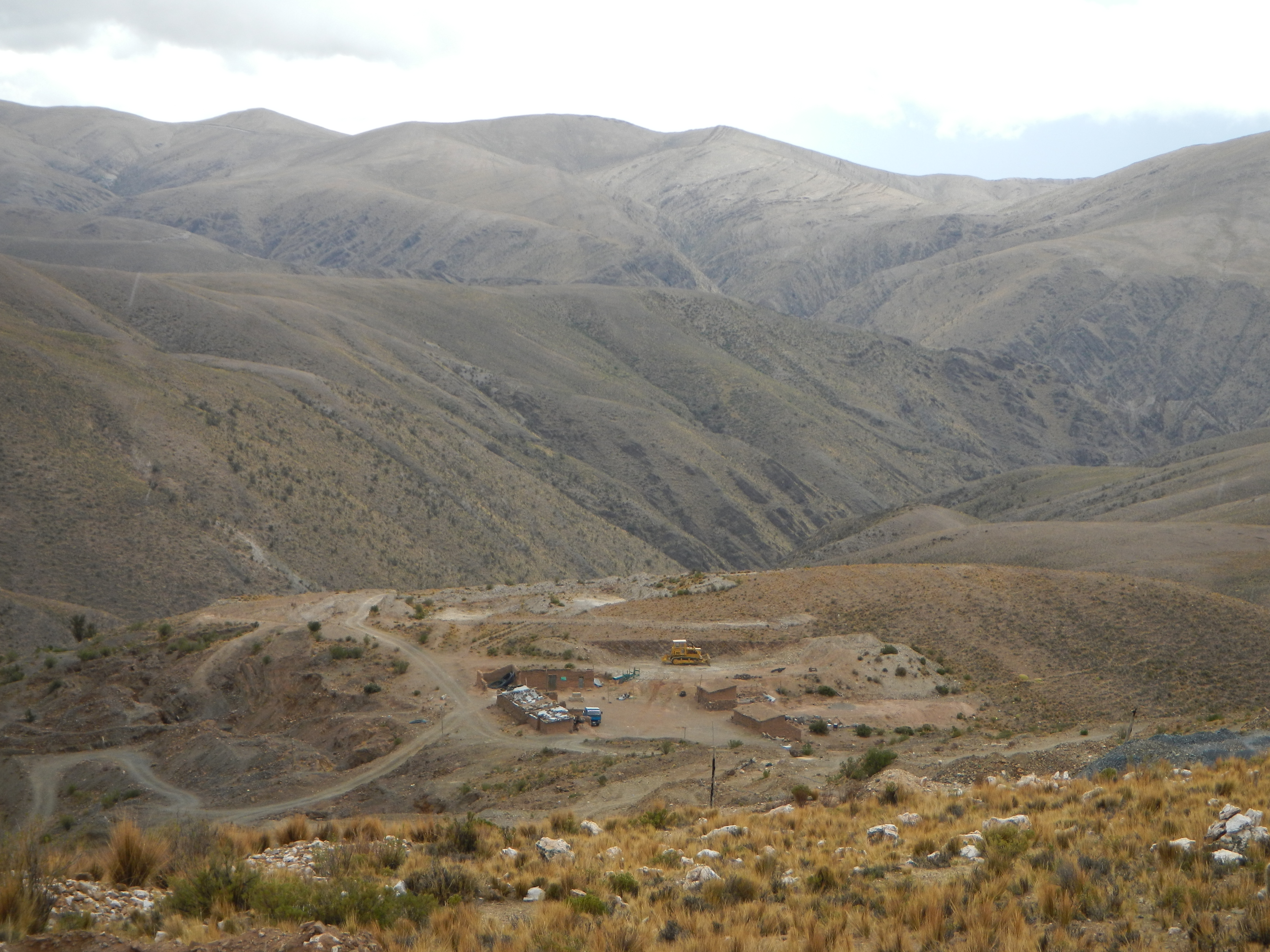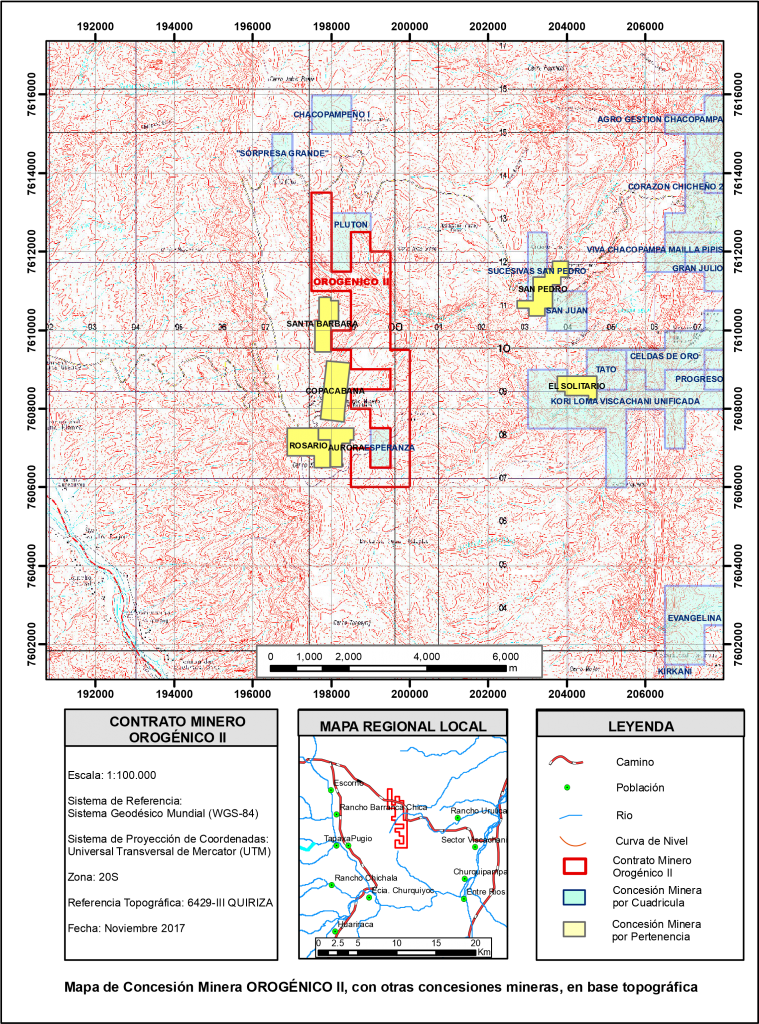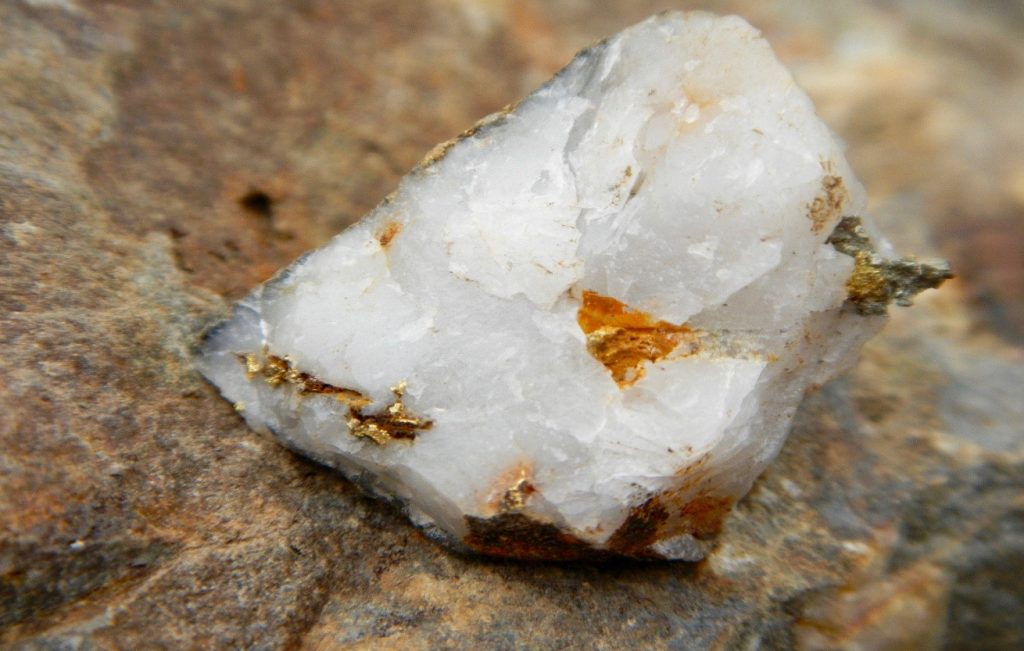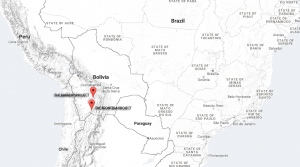
COPACABANA CONCESSION
COPACABANA CONCESSION
The Copacabana gold project is located, effectively adjacent to the Frontera Orogenic II. The property extends just 90 hectares and is also situated at elevations averaging 3,700 m above sea level. The topographic relief is moderate and generally consists of high ridges with steep slopes and deep narrow valleys with over 100 m of relief in the immediate area.
EXPLORATION
After completing detailed mapping and sampling programs, a reverse circulation and diamond drill program were conducted. Of the nine holes completed, six had significant gold intercepts. The drilling indicated that the possibility of both bulk tonnage and high-grade vein mineralization in the property. The best results from drill hole RC3 showed 0.41 ounces per ton (13.97 g/t) over 39 feet (12 m).
Results from five of nine holes drilled by reverse circulation along a 1,000-metre can be summarized as follows: Hole 3 returned 92 meters grading 2.97 grams gold; hole 3 also returned 32 meters at 0.46 gram; hole 5 intersected 28 meters at 5.27 grams and bottomed in mineralization; hole 6 intercepted 4 meters at 1.32 grams, also bottoming in mineralization; and hole 7 returned 40 meters grading 1.57 grams.
RESOURCE POTENTIAL
Based on the exploration undertaken to date the Copacabana prospect can be preliminarily summarized as follows:
Average Width = 100 m.
Length Extension = 1,000 m.
Recognized Vertical Extension = 100 m.
Approximate Specific Weight = 2.5mt/m3
Approximate Tonnage = 100 x 1,000 x 100 x 4.3 = 43,000,000 tons
Average Grade = 1.4 gr. Au/t Estimated Oz gold = 1.94 M.
Its Au potential can be defined as a measured and indicated resource totaling 24.1 million tonnes at 1.41 grams/tonne (1.1 million ounces gold). In addition, an Inferred & Potential resource totaling 18.7 million tonnes at similar grade (0.8 million ounces gold). The Copacabana prospect is representative of the gold deposits that occur in the southern Bolivian Andes, hosted in turbidites (sandstone, and sandy slates) of Ordovician age and controlled by a regional anticline of N-S direction. The mineralized system shows a preliminary potential of nearly 2 million ounces of gold. Mineralization occurs as quartz veins, veinlets, stockworks, and breccia zones located chiefly along the axial zone of the main anticline.
The potential resource calculation was arrived at based on data obtained from sources other than Pacha. Therefore this data is for discussion purposes only. Having not been adequately assessed, the deposit area requires more intensive exploration, i.e. additional sampling, trenching, mapping, geophysical prospecting, and diamond drilling.

LOCATION OF COPACABANA IN RELATION TO THE FRONTERA OROGENIC
MINERALIZATION & ALTERATION
Situated on the eastern flank of a north trending anticlinal that dips between 30° and 80° The Copacabana prospect is hosted by ductile and fragile sequences of Ordovician rocks (Photo 1). The lower layers show a major proportion of psammitic material intercalated by thin pelitic layers (sandstones and sandy slates), Photo 2. Towards the top of the section pelitic rocks are more abundant than the psammitic ones.
This deposit is structurally controlled by a regional anticline of N-S trend, however, it is overturned in the southern portion of the property. The central part of the property shows several minor foldings caused by compression effects, where also exist zones with a lot of fractures (Photos 3 and 4). The major fractures trend N-S showing variable dips. The minor fractures that exist in major quantity trend N 40° – 80° E with variable dips.
At Copacabana, the mineralized system that corresponds to orogenic style extends about one kilometre trending north-south in length, approximately one hundred fifty meters in width and around 100 m in vertical extend. The mineralization comprises several sets of gold bearing quartz veins, veinlets, stockworks and breccia zones which are located mainly along the axial zones of the main anticline and of minor drag folds The minerals consist of pyrite, stibnite, chalcopyrite, arsenopyrite, limonite, cervantite and fine and coarse visible gold in some cases.
Wall rock alterations occur along the mineralized structures and consist of silicification, argillization and sericitization associated with the silicification. The auriferous mineralization in the silicified sandstones occurs intercalated with bituminous shales, accompanied by sulphide dissemination and quartz veins and veinlets, and sometimes with pyrite veinlets parallel to the stratigraphic beds. The gold is closely associated with pyrite, arsenopyrite, pyrrhotite and quartz.

Coarse gold in quartz from the Copacabana

